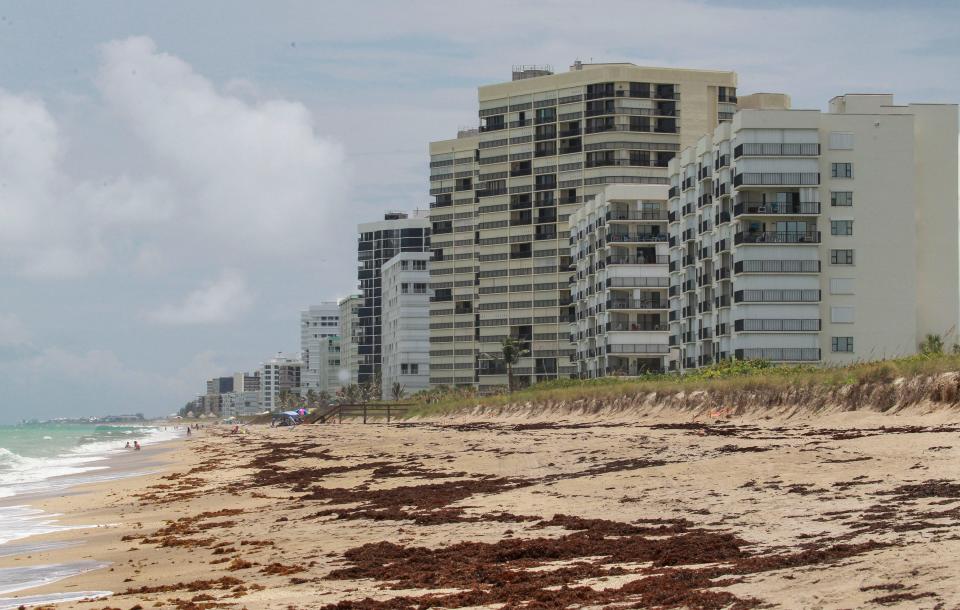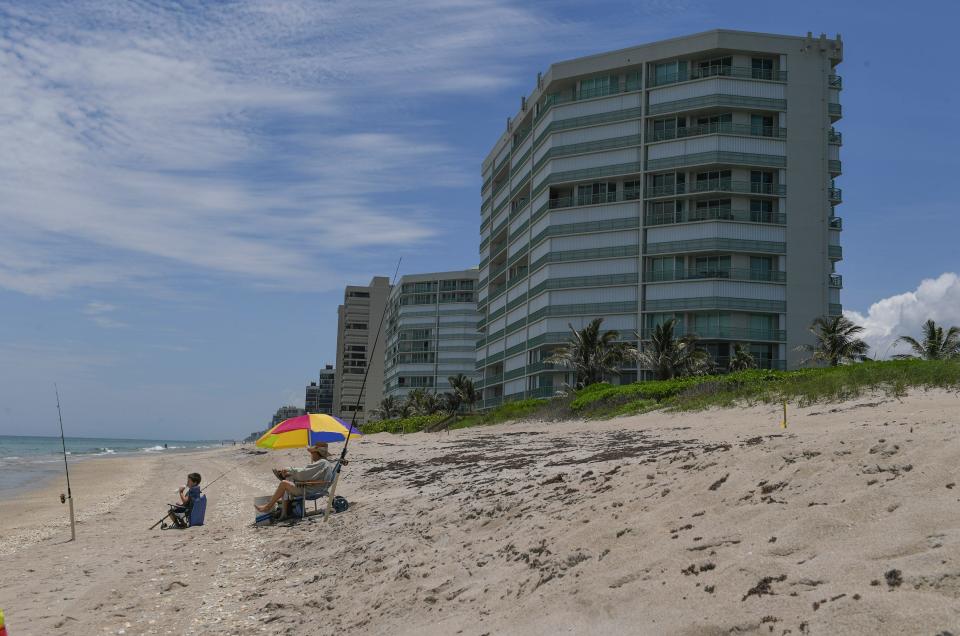More high rises on Hutchinson Island? Come on, do you really have to think about this one?
St. Lucie County commissioners are expected to decide next month whether to allow more high-rise construction on South Hutchinson Island. If they use some common sense, it should be an easy call to make.
In 1995, the commission voted to limit building heights in an area south of the St. Lucie Nuclear Plant to 35 feet. However, at greater distances from the plant, the building heights can reach 125 feet.
Commissioners recently learned there was a discrepancy in the language adopted in 1995. The text of the amendment is different from the map commissioners adopted for the two building height zones. Three lots appear on the map to be within the area restricted to 35-foot limits, while the text suggests they are within the area with 125-foot limits.
This matters because a developer owns two of the three lots in the disputed area, as well as adjoining property that's clearly governed by the 125-foot restriction.
If commissioners rule the higher building heights are allowable on the three disputed lots, the developer, Sand and Sea Properties, may try to buy or arrange a land swap for the parcel not already under its ownership and build a large high-rise building on the combined properties.
Gary Oldehoff, a Stuart attorney, is representing a group of neighborhood residents that wants to maintain the 35-foot limit on the vacant lots. Oldehoff contends it's clear commissioners intended all properties marked on the map, including the three disputed lots, to be governed by the 35-foot height restriction.
Cliff Barnes, the only commissioner serving in 1995 who's still alive, submitted a signed affidavit indicating that his vote was based solely on the map and not the text.
Current Commissioner Chris Dzadovsky suggested Barnes' memory might be faulty. And even if it isn't, Dzadovsky said the other commissioners at the time might have been relying on the text rather than the map.
Short of holding a seance, there's no way of refuting Dzadovsky's assertion about what the other commissioners might have thought.
By questioning Barnes' sworn testimony, though, it seems clear Dzadovsky is leaning toward allowing high-rise construction on those three lots.

Mistakes in written texts of laws are so common, there's a legal term for them: Scrivener's errors. Usually, they're just typos or misspellings that can be easily fixed. They don't require interpreting legislative intent.
So what are we to believe? Commissioners looked at the maps with the different building height zones clearly marked ― and made their decision based on that ― or they truly understood the wording of the legal descriptions and deliberately chose to exclude those three lots from the more-restrictive zone?
As anyone who has bought a house can attest, it's difficult for a layperson to decipher what legal descriptions actually describe. Maps, by contrast, are easier to read and understand.
But let's look at the rationale offered at the time the 1995 restrictions were put in place for clues. Commissioners apparently said they wanted to limit high-rise construction in the area so it would be easier to evacuate the island if there were problems at the nuclear plant.
The nuclear plant is still operational, so there's still a risk a mishap could occur there someday. Also, there's an ongoing risk of hurricanes striking the area, which would also require evacuations.
The only thing that's changed over the last 28 years is Hutchinson Island has gotten more crowded, so evacuating the people who live there quickly would be even more challenging under the best of circumstances.

Why would commissioners make it even tougher to evacuate by allowing more high rises in the mix? (Besides the obvious of helping the development company fatten its bank account, I mean.)
Let's assume for a second commissioners had taken no action on this in 1995 and the current group of commissioners was trying to make a decision on building heights based on the best information available today.
As has been well documented, Florida is in the midst of a homeowners insurance crisis.
As our sister newspaper, the Palm Beach Post recently reported, the state’s average premium is $4,200, triple the national average, and state data shows many homeowners pay much more. Some private insurers are withdrawing from Florida entirely, rather than assuming the risks of widespread damage claims following hurricanes or other severe weather.
So how do the insurance companies still operating in Florida manage risk? By charging higher premiums to all their customers to subsidize the costs of claims in the highest-risk areas.
And what are the highest-risk areas? Coastlines and barrier islands, like Hutchinson Island.

It stands to reason that one way to bring down insurance premiums would be, at a minimum, not to encourage intensive development in areas that are most at risk for storm damage. Commissioners can't force the Florida Legislature to adopt meaningful insurance reform, but limiting that type of development is one small way they could help their constituents manage premium costs.
Still unsure of what commissioners should do? There's a legal concept known as "detrimental reliance." It means if someone makes a decision based on an interpretation of a law or contract, then suffers negative consequences because that law isn't followed or the contract isn't honored, then that person is entitled to sue for legal damages.
At least some of Oldehoff's clients likely bought property in the area with the reasonable assumption there would be no more high-rise buildings built nearby, which could negatively affect their own property values. They could file a lawsuit if the commission decides to allow taller buildings on the disputed lots.
So, let's recap: It seems clear, based on the rationale for imposing building restrictions, one commissioner's sworn testimony and a practical review of the documents commissioners were using to make their decision, the intent was to restrict building heights on those three lots.
Restricting building heights in that area also is good current public policy, based on the potential need to evacuate the area quickly.
And if commissioners don't keep the height restrictions on those three lots, there could be a lawsuit against the county that's easily avoidable.
I can't predict what commissioners actually will do. What they should do seems obvious.
This column reflects the opinion of Blake Fontenay. Contact him via email at blake.fontenay@tcpalm.com or at 772-232-5424.
This article originally appeared on Treasure Coast Newspapers: St. Lucie commissioners already know right answer on high rise issue

